Smart from the start

This month’s MBS round table, sponsored by Swegon, considered the rise of the smart building and smart kit.
Our panel of experts found that to make the most of these new technologies we need a smart approach to design, installation – and use. Karen Fletcher reports.
The current global market for ‘smart building systems’ was estimated at around $7 billions in 2017 but is expected to grow beyond $30 billions by 2022. This means the sector is outstripping other parts of construction by some distance. Part of the reason for growth is interest from clients in benefits such as energy efficiency and data on building performance. Manufacturers of building controls equipment are also adding smart features to their products, including wireless interoperability, remote monitoring and links to smartphone apps. As these factors merge, their impact on how buildings are designed, constructed and operated increases.
|
WHO'S ON THE PANEL Jon Belfield – president of the Building Controls Industry Association (BCIA) and managing director, InTandem Controls Dene Kent – Indoor Climate sales director, Swegon Darren Peel – Indoor Climate controls specialist, Swegon Terry Sharp – vice-president of the BCIA and associate, NDA Consulting Reanna Taylor – senior project engineer NG Bailey and CIBSE Graduate of the Year Guy Willis-Robb – associate director, Harley Haddow Nathan Wood – chair of the BESA Health & Wellbeing Group and managing director, Farmwood Mechanical & Electrical Services |
One of the challenges when discussing smart buildings is finding a definition. Reanna Taylor, senior project engineer at NG Bailey takes a user-centric approach: “You could say that a smart building is one that supports the physiological wellbeing of the occupants.”
Jon Belfield, president of the Building Controls Industry Association (BCIA) says: “There is no real measure of ‘smart’ has been achieved and perhaps we shouldn’t have one because every building could always be made smarter. And we have to ask, does it really need defining?”
Even if there is no technical definition, our group of experts did focus on outcomes that they deemed ‘smart’. These include energy efficiency, and a healthy, productive environment for occupants.
Dene Kent, Indoor Climate sales director for Swegon, says: “There is a clear link between the indoor environment and our health and ability to perform. I would say that a smart building is one that continuously adjusts that indoor environment according to the needs of occupants, maximising comfort while also minimising power consumption.”
Our panel of experts agreed that advanced building management systems (BMS) can bring a number of benefits to building owners, occupiers and the environment. However, smart kit and its integration into an integrated BMS often requires a level of investment that can be challenged in an industry where capital expenditure is prioritised.
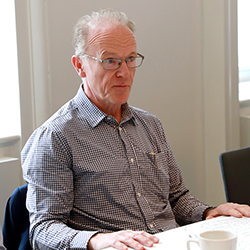 |
| Jon Belfield |
Reanna Taylor says: “At the contracting stage there is a tendency to look for ways to drive down costs, so it is important to make a good case for smart solutions so that they are viewed as an investment that will not only pay back over a number of years, but actually go on to add money to the bottom line in the long-term.”
Jon Belfield agrees: “Can we challenge the construction phase to adopt the long-term view that is needed to deliver savings? I think it will eventually catch up.” He also says that suppliers have to be fair to customers: “If you haven’t got the money then there is nothing we can do about that. But we can make sure clients don’t make the wrong decisions during construction that can’t be reversed, so there is still an opportunity to improve the building performance at a later stage.”
The panel viewed the education of building owners (and users) about the benefits of smart technology and BMS as vital. Not only is it more likely to discourage the value engineering of control systems at the early stages of design, it results in better long-term use of the systems.
Guy Willis-Robb, associate director of consulting engineer Harley Haddow, points out: “Often clients tell us they don’t want a ‘complicated controls system’. But when they explain what they want to achieve, it turns out that they do want something that’s an advanced system. There will always be cost pressures, but we give our clients an idea of the impact on running costs if they choose to remove an item from the specification. This makes them aware of the long-term implications.”
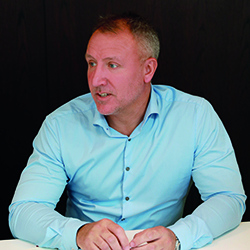 |
| Dene Kent |
Of course, knowing what the client wants is not always possible, as Terry Sharp, vice president of the BCIA and associate at NDA Consulting, points out: “Often, buildings are speculative; just shell-and-core, so we don’t know what the client wants, how they will occupy the building or how they will use it. It’s only once a client is in the building that you could set up a tailored solution for them. You can’t apply a user-focused control strategy on a speculative development.”
Darren Peel, controls specialist at Swegon says that flexibility is a key element of smart buildings: “Buildings and spaces in them are often converted for different uses during their lifetime. A smart solution ensures that this can be managed successfully. For example, using wireless communication ensures that you have an infrastructure that allows for changes, or that provides a platform for future developments.”
Taylor adds: “It is all about the user and supporting their ability to make the best of the building. You need to educate the person who is actually going to run the building. We find we are changing controls strategies to make it work, and we do bring in experts to help us achieve that.”
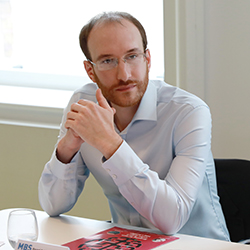 |
| Darren Peel |
The issue of delivering smart technology into a building is a particular challenge which is compounded by the fast-moving nature of the sector. And with more manufacturers adding ‘intelligence’ to building services equipment, it is vital for installers to stay on top of developments.
Nathan Wood, chair of BESA’s Health & Wellbeing Group and managing director of Farmwood Mechanical and Electrical Services says: “The contractors don’t always understand what is being installed. It is vital that we all sit down and have a conversation to ensure that all the dots are connected. Otherwise, you end up going around and around in circles with people blaming each other’s kit for problems.”
Guy Willis-Robb agrees: “We write into our specifications that everyone works together to make sure it all interoperates. It’s the only way to properly deliver a BMS.”
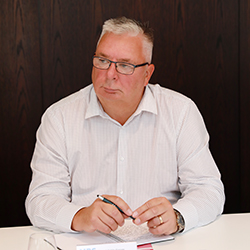 |
| Terry Sharp |
All agreed that training and sharing knowledge are vital to ensure that the industry (and its customers) can make the most of smart, connected building services equipment. And this applies at all levels of the industry.
Willis-Robb says: “There are very few people capable of writing a good controls package. Lots of manufacturers want to hand over the kit and leave you to sort it out because they don’t have the expertise to make it a ‘connected’ building.”
Wood adds that manufacturers need to lean in to help installers deliver better outcomes: “There are manufacturers jumping on the smart bandwagon. Do we really need an app to boost your fan when you’re sitting on the toilet? Let’s focus on delivering real benefits like cutting down on installation time and delivering energy savings.”
Kent adds: “We are making our WISE system as easy as possible to install with wireless technology, so you can quickly install and commission a commercial building. To deliver, you need skilled people who understand the HVAC elements, and what they need to do to connect all of that together.”
 |
| Reanna Taylor |
Darren Peel concurs: “You certainly need to have an understanding of the whole building when commissioning a system like WISE. You must be able to ensure that all the HVAC systems interoperate. That’s why we work so closely with many parties throughout the project, partnering right from the beginning. We then send our own engineers to support the commissioning stage to ensure it is optimised for the needs of occupants and building owners.”
Wood adds that support from manufacturers is very important: “We do need more manufacturers to train the installers. We are seeing this with ventilation and MVHRs which are being installed widely, but people don’t really know what they are doing.”
Taylor agrees that this sort of know-how is vital: “NG Bailey has its own specification, and when we decide on a particular type of equipment, then the manufacturer will come and train every single engineer who will be working with their system. We have to have the right training to make sure we know what we are doing.”
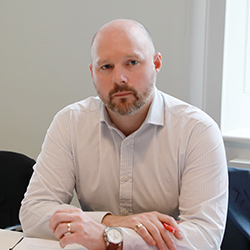 |
| Guy Willis-Robb |
Kent adds that as manufacturers, they see this role as an important part of their service: “We send out our technical salespeople to help installers. This is particularly true with equipment such as fire dampers and controls which are life-critical in buildings.”
As buildings and the equipment in them move to new levels of performance and connectivity, engineers and installers have to attain new skills. “It’s not simply a case of a lack of skills,” says Taylor. “It’s the fact that the skills we need in the industry are changing as the IT progresses. Lots of people who have been in the industry for years have a lot of skills, but not necessarily the right ones for some of the things they are coming across on today’s projects.”
Belfield agrees: “At InTandem we are now employing IT engineers and training them in the HVAC side, which is not something I thought we would ever do. But that is where new technology is taking us and it is very positive in the transition from traditional BMS to smart buildings.”
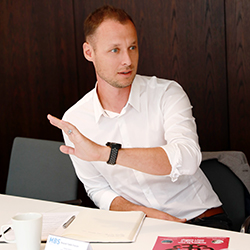 |
|
Nathan Wood |
There is no doubt that systems like Swegon’s WISE are an opportunity and a challenge for the construction industry. A few years ago, having a system that could adapt the indoor climate of an entire commercial building based on real time occupant demands, monitor system maintenance and minimise energy consumption without comprising the quality of the indoor environment was extremely complex to design and deliver.
The world of tomorrow is already here, but the industry needs to adjust to the new reality with a more open approach to sharing information, educating building owners and occupiers – and training engineers and installers. In future, a ‘smart building’ may not be defined so much by the technology in it, as in the way it is designed, constructed and operated.







